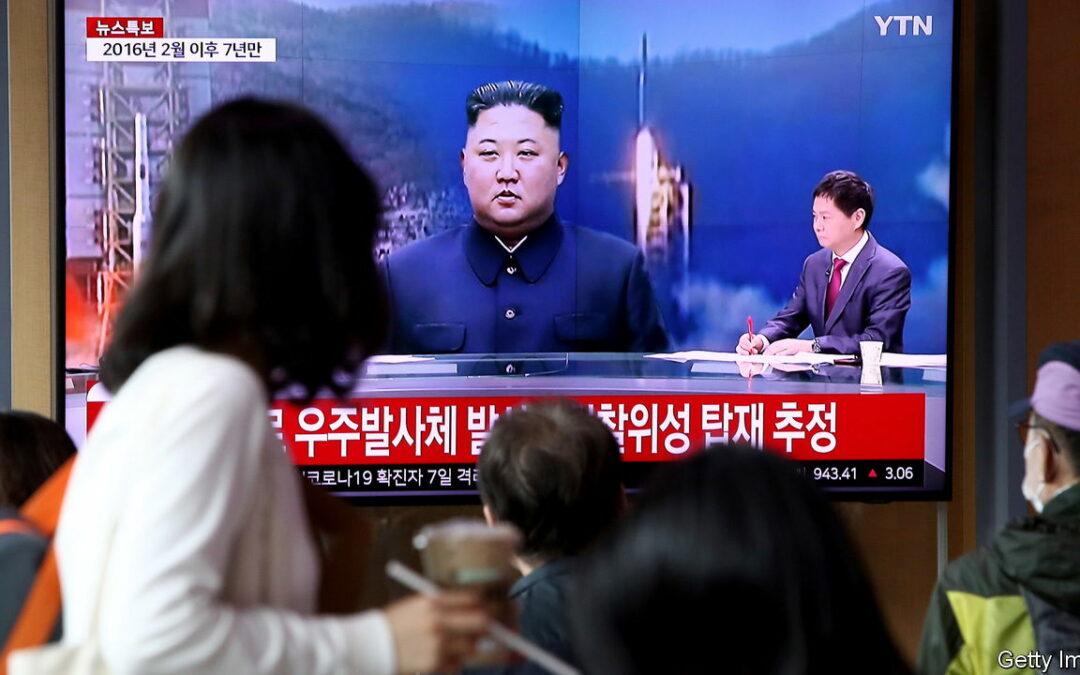ON THE MORNING of May 31st the citizens of Seoul, South Korea’s capital, had a rude awakening. Just after half past six the sound of sirens filled the air. Phones buzzed on nightstands, urging residents to seek shelter. Confusion ensued: Seoulites did not know what the alerts meant or how they were meant to act. The city government had triggered them in response to North Korea’s attempt to launch a satellite. It soon emerged that that attempt had failed; the warning was retracted 22 minutes after it had gone out. Oh Se-hoon, Seoul’s mayor, later said that it had been an “overreaction”. It certainly seemed ill-judged—North Korea had taken the rare step of announcing that it would launch a satellite between May 31st and June 11th and the projectile’s flight path was miles from the city. Although the launch posed little danger, North Korea’s satellite programme does present an insidious risk to the South. Why?
North Korea’s regime claims that the launch was a response to huge live-fire drills being conducted by South Korea and America between May 25th and June 15th, but its satellite programme has a relatively long history. After a string of failures it carried out its first successful launch in 2012 and a second just over three years later. But experts doubt whether either satellite is currently sending data back to Earth. Although the regime has not attempted a launch since 2016, Kim Jong Un, North Korea’s dictator, reaffirmed his desire for satellites during a conference of the ruling party in 2021. The country said it had conducted several equipment tests last year.
In the past North Korea claimed that its space programme is first and foremost peaceful, designed to foster economic development and improve the lives of its people. Satellites serve all sorts of purposes, from supporting global-positioning systems to monitoring crops. But the regime has said that the next satellite will be for military purposes. One reason Mr Kim wants the contraptions in space is so that North Korea can gather real-time information on “the dangerous military acts of the US and its vassal forces”, thereby fulfilling its “legitimate” right to defend its “sovereignty and security”. Having a better understanding of troop movements might mean the North Koreans are less likely to interpret innocuous movements as threats, lowering the risk of accidental escalation. That same ability to watch enemy troop movements could be used to spy on ordinary citizens, too.
Getting satellites in orbit could also help with another of the regime’s military ambitions. Satellites could speed up the development of its missile programme. Valuable information can be gleaned by observing missiles as they splash down. Without satellites, this would need to be done by having ships nearby, which is not usually feasible for North Korea given the trajectories of its missile tests (its ships rarely stray far from the coast). And, importantly, weapons development and satellite-equipment testing are not mutually exclusive. Though not identical, the technologies are sufficiently similar that the same test can serve both aims. According to an article from 2019 in a law journal published by Kim Il Sung University, the country’s most prestigious institution of higher education, all that determines whether a rocket is used for peaceful research or as a weapon is “whether the vehicle is equipped with a satellite or a bomb”.
Soon after it emerged that the launch on May 31st had failed, North Korea announced that it would try again very soon. America’s denunciation of the launch as a “brazen violation” of UN resolutions is unlikely to slow the regime. All the more reason for South Korea to sort out its warning systems quickly. There’s no point in crying wolf if no one believes you. ■
Editor’s note (May 31st 2023): This is an updated version of an earlier article on North Korea’s missile and satellite launch programme.









